1. Unveiling AIGC
AIGC (AI-Generated Content) refers to using artificial intelligence to produce content. AI stands for artificial intelligence, and GC stands for generated content. Currently, AIGC is mainly applied to text, images, video, audio, and games.
ChatGPT is a language generation model built on natural language processing techniques. It can automatically generate new text content based on an input prompt. By contrast, MidJourney (one of the AI image tools) is a data processing and analysis tool designed with graphical computation and machine learning techniques; it can automate workflows by processing data.
Although ChatGPT and MidJourney differ in their specific implementations, both are concrete applications built on the broader AIGC technology. If AIGC is likened to a librarian, ChatGPT and MidJourney are the librarian's assistants. AIGC tools can process and manage large volumes of text and data more intelligently, provide more accurate information, and speed up data analysis compared with traditional methods.
2. Why did AIGC surge in 2022?
AIGC leverages foundational AI capabilities such as natural language processing and computer vision to understand external user instructions.
From the content perspective, AIGC can automatically generate text, audio, images, video, code, and multimodal content.
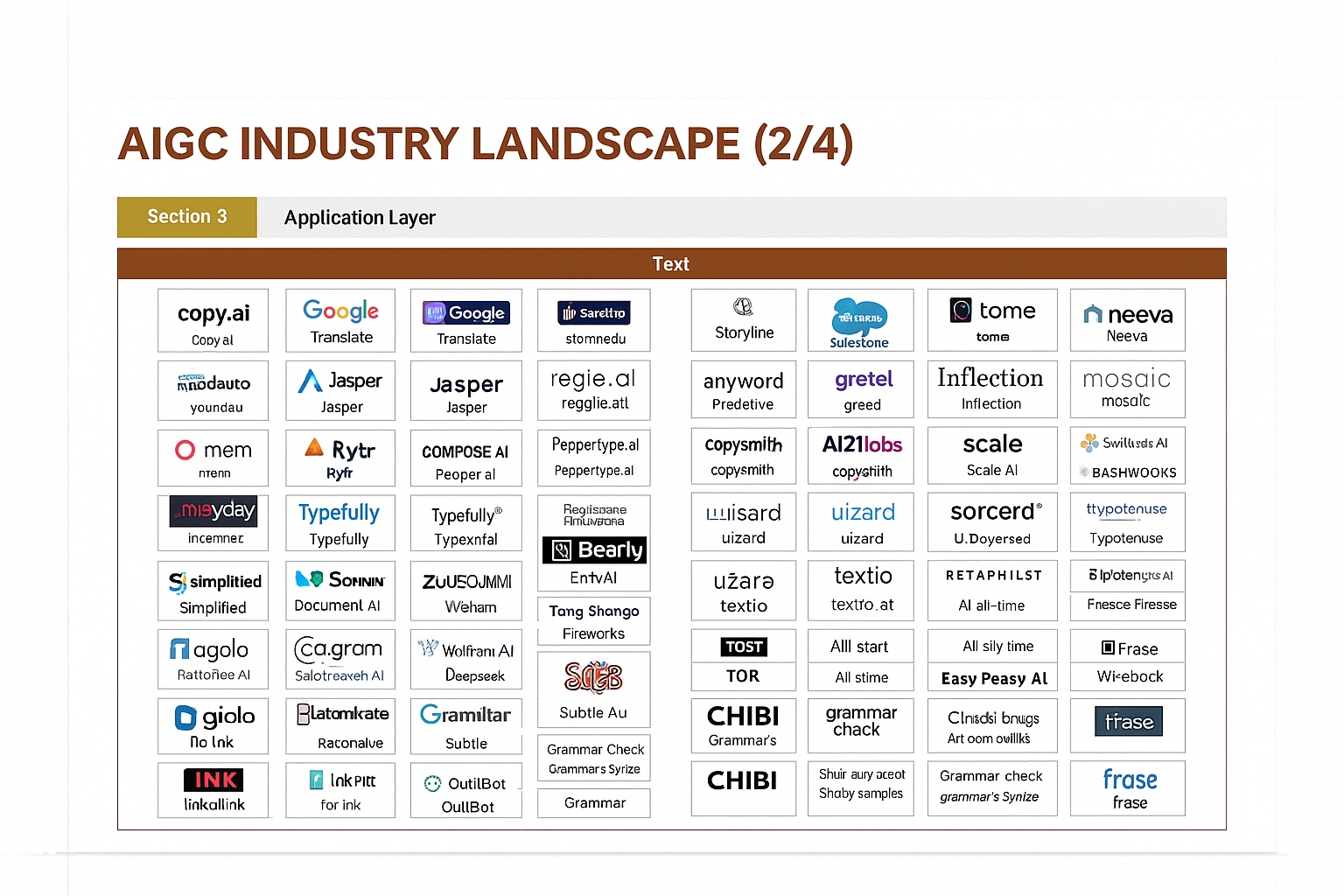
From the application perspective, companies such as Microsoft and Google are applying AI technologies to search, where conversational AI can significantly improve the search experience. Search is expected to be one of the fastest domains for AI deployment. Beyond search, AIGC has been applied widely across office software, education, healthcare, smart cities, and virtual environments.
For different content types generated by AIGC, specialized production tools have emerged to meet domain-specific needs.
Text
The most popular AI text tool is ChatGPT, which functions like a conversational agent where users can input questions or engage in natural language dialogue. Natural language refers to the language systems developed over centuries for human communication, such as Mandarin or English. By contrast, programming languages like Python and C++ require specific syntax rules to communicate with computers.
Therefore, anyone literate in a natural language can interact with ChatGPT.
Other AI writing tools exist as well. For example, Jasper.ai is an AI marketing and writing assistant that can generate advertising copy, slogans, web copy, emails, blog posts, and social media content.
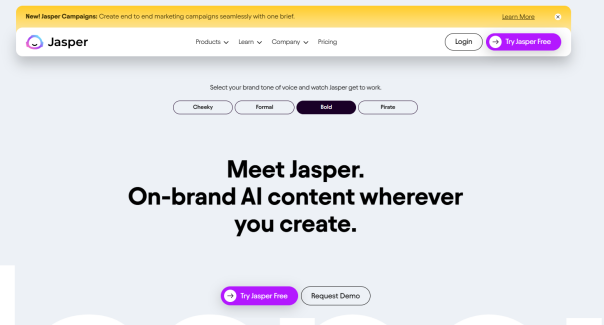
For instance, if you need to write an Instagram post, such tools can generate content on demand. They are typically offered under monthly subscription models.
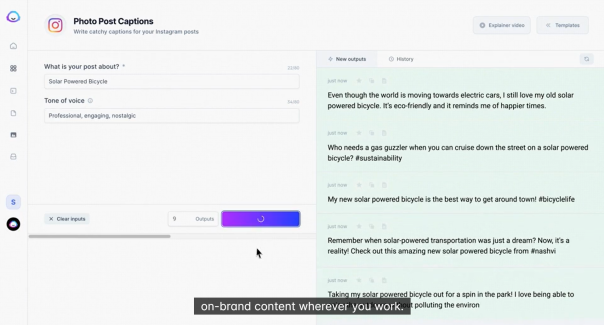
Image
Many social media influencers now use tools like Stable Diffusion to generate images, which can address issues like inconsistent hand details that traditional photography and retouching would struggle with. Instead of time-consuming shooting and editing, creators can input prompts and generate images within seconds.
Professional designers also use tools such as MidJourney, which can handle hand-detail issues and support tasks like brand logo design, portrait design, and product marketing images.
Audio
AI music generation services such as Mubert allow users to input prompts and generate music, extending AI's strong performance in images to audio.
Video
Video tools are evolving rapidly. Tools like Runway enable AI-driven video production, performing tasks such as object tracking, unwanted object removal, background matting, and style changes using textual descriptions. These tools realize the idea of describing a video verbally and having it edited accordingly.
Large language models can be combined with many scenarios, including speech recognition, intelligent customer service, chatbots, and text generation. These applications use advanced AI technologies to deliver more efficient, accurate, and intelligent services.
- In search engines, AI assists users in finding and filtering information more precisely, improving result relevance. For example, Google-related AI search efforts have introduced semantic search approaches.
- In note-taking and writing tools, AI helps users read, analyze, and produce content more efficiently, improving writing quality and productivity. Examples include AI-enhanced writing platforms.
- In office software, AI assists with text processing, data analysis, and presentation creation, improving workplace efficiency. For example, Microsoft 365 Copilot integrates AI into productivity workflows.
- In education, AI can create personalized learning plans and materials, enabling on-demand tutoring and improving learning outcomes. Various AI-driven education platforms provide such capabilities.
- In development tools, AI helps programmers write business code, debug, and improve code quality and development efficiency.
- In customer service, AI enables 24/7 automated reply systems, supporting fully automated customer support.
- In video conferencing, AI provides multilingual translation, meeting summaries, and searchable transcripts, improving meeting efficiency.
- In domain consulting, AI can offer automated guidance in areas such as law, healthcare, and fitness.
- In social media, AI helps users find and participate in interest-based topics and communities, boosting engagement.
- In entertainment, AI personalizes recommendations for music, movies, novels, and animation.
- In gaming, large language models enable NPCs to have more flexible and personalized dialogues with players, increasing immersion.
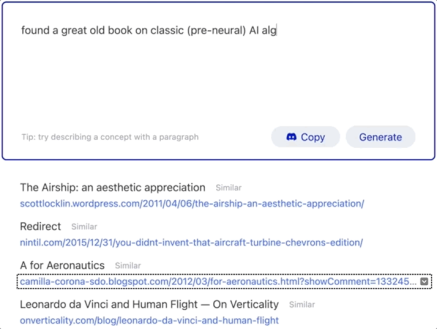
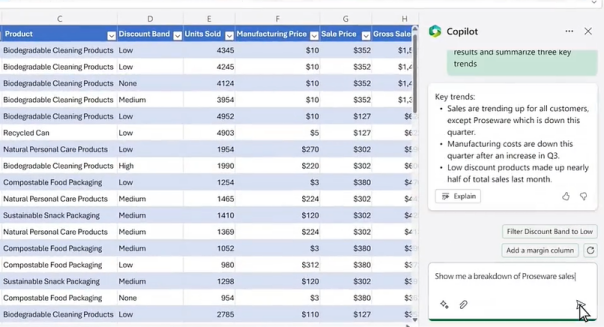

3. Impact of AI on e-commerce
AI is transforming e-commerce workflows. For example, by combining ChatGPT and MidJourney, individuals with no design or inventory background have launched online apparel stores that rely heavily on AI-generated names, logos, designs, and product descriptions.
A case widely discussed on social media involved an online store that used AI for all design and content generation, eliminating the need to hire designers, photographers, models, and copywriters.
E-commerce professionals should anticipate substantial change across roles and business models.
- Copywriters, product editors, social media editors, and data entry roles may be gradually automated by AIGC, which can generate creative natural language content using large language models, reducing time and cost for content creation and marketing.
- With AI image generation, costs for models, photographers, and designers can be reduced, while images can be flexibly optimized to meet personalized consumer needs.
The AI-driven store model can be extended to other domains such as jewelry, interior design, and product packaging to automate more production and innovation processes.
Some analysts predict that a large number of repetitive jobs will be automated by AI, potentially affecting hundreds of millions of jobs worldwide. Media outlets have published lists of occupations that could be impacted by models like ChatGPT.
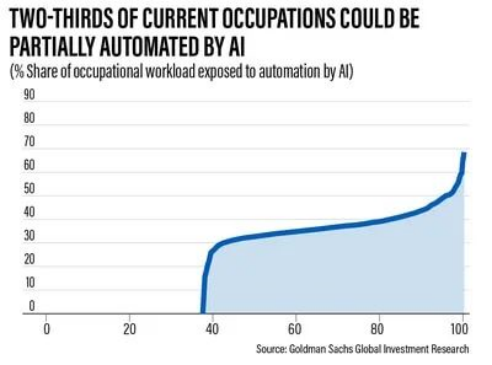
4. Unlocking ChatGPT's potential
Some view ChatGPT as merely a conversational search engine. However, computers and AI are tools whose value depends on how users understand and exploit them. People use computers for a wide range of activities, from casual entertainment to scientific research.
Both computers and AI are tools; the value they generate depends on whether users know how to use and explore their potential.
For example, someone wanting to start a business using the OpenAI platform might ask a simple question and receive a basic answer. A user skilled in prompt engineering will instead provide a precise, role-based request and receive a more comprehensive, actionable plan.
| Now you are my business consultant. I want to develop a B2B SaaS startup based on OpenAI. Help me generate a business plan including: 1. Company name: a cool, attention-grabbing name reflecting AI characteristics. 2. One-sentence description of the business concept. 3. Target users and their pain points. 4. Core value proposition, sales and marketing channels. 5. Expected revenue streams and cost structure. 6. Key activities, resources, partners, and validation steps. 7. Estimated first-year operating costs. 8. Potential business challenges. Summarize the results in a table. |
With such a precise prompt, ChatGPT can provide a relatively complete and relevant business plan response.
Similarly, effective prompting applies to image generation.
With sufficient prompt skills, ChatGPT becomes a highly productive tool.
5. What AIGC and GPT can do
AIGC industry chain
The AIGC industry chain consists of compute, algorithm models, and applications.
ChatGPT depends on GPT large models, which require significant compute resources for training. Therefore, AIGC ecosystems still rely on the basic framework of compute, algorithm models, and applications.
Industry chain structure
The AIGC industry chain can be divided into three layers: foundational, middle, and application.
1. Foundational layer: Builds infrastructure using pre-trained models and has the highest entry barriers. Companies in this layer include technology giants and AI research organizations that develop large foundational models.
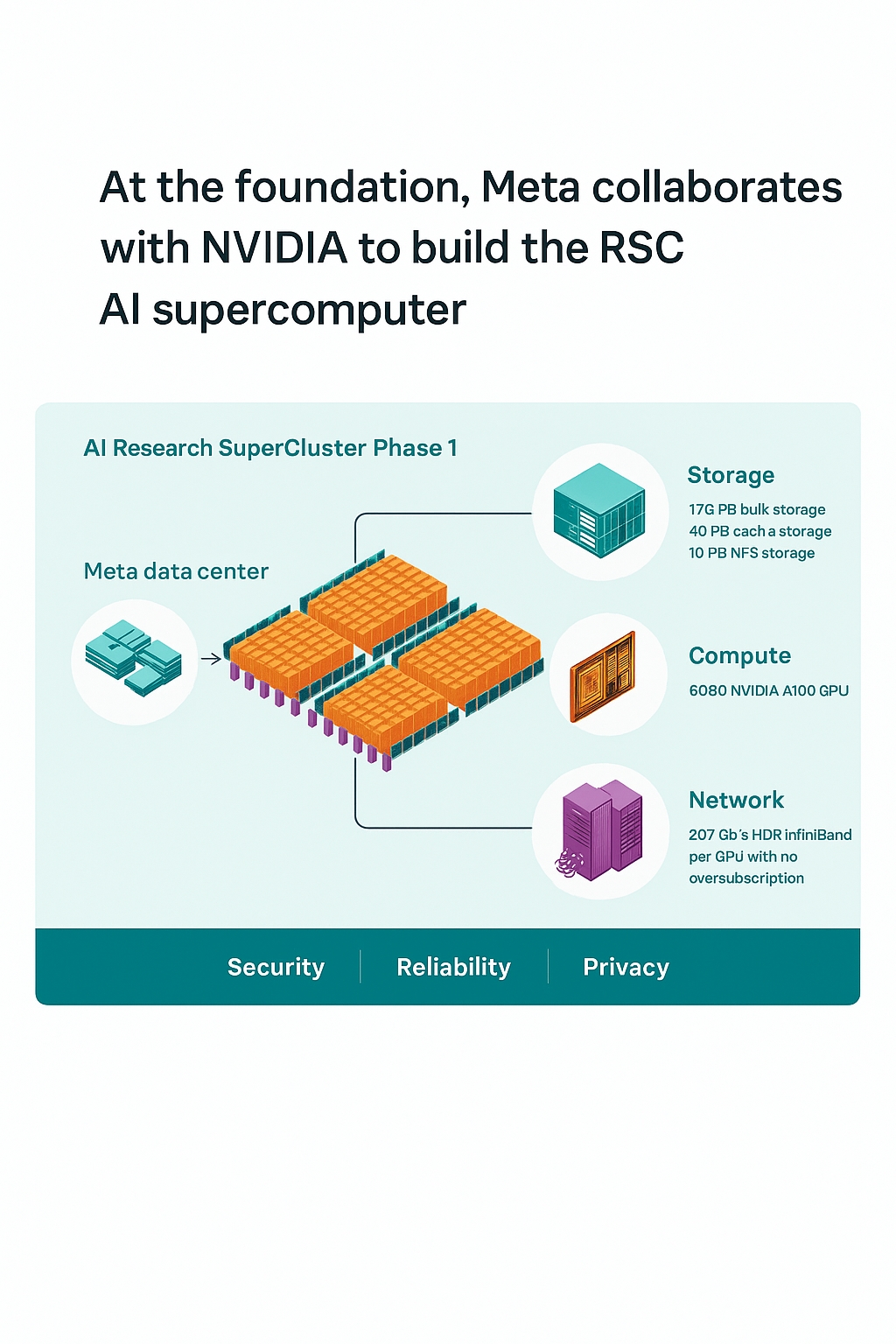
2. Middle layer: Develops verticalized, scenario-specific, and personalized models and application tools based on pre-trained models. Middle-layer vendors create smaller, customized models to enable rapid AIGC deployment in different industries and verticals.
3. Application layer: Provides text, image, and audio/video content generation services for end users. Typical providers include global tech companies and leading Chinese tech firms. Application-layer companies focus on meeting user needs and creating content consumption demand; AIGC applications such as AI writing and AI image generation have been adopted in marketing, entertainment, and art collection.
ChatGPT industry applications
1. ChatGPT + Finance and Securities: customer service, investment suggestions, news distribution, risk management.
2. ChatGPT + Manufacturing: quality control, production planning, equipment maintenance, process improvement.
3. ChatGPT + Healthcare: medical consultation and diagnosis support, knowledge base management, medical image recognition, health data management.
4. ChatGPT + Education: teaching assistance, learning resource recommendation, assessment, academic writing support.
5. ChatGPT + Retail: customer service, marketing campaigns, data analysis, inventory management.
6. ChatGPT + Advertising and Media: content generation, ad targeting, audience analysis, virtual influencers.
7. ChatGPT + Power Sector: dispatch optimization, equipment maintenance, refined grid management, data handling.
8. ChatGPT + IT: customer support bots, RPA for expense processing, summarization, intelligent code assistance.
9. ChatGPT + Transportation: traffic forecasting, intelligent dispatch, travel planning, decision-making for autonomous driving.
Specific AI application scenarios
1. Office software: Excel, Word, PowerPoint, etc., where AI can generate content based on instructions.
2. AI + image generation: enabling flexible image creation and “painting freedom.”
3. AI + video: rapid video attribute editing, automatic clipping, and virtual environment synthesis.
4. Virtual humans: using text, image, and audio generation to create lifelike digital characters with coherent appearance, facial expressions, and speech habits.
6. How individuals should approach AI
ChatGPT is powerful but lacks autonomous consciousness; for many prompts it provides mechanical answers. It must be used appropriately to realize value.
Tools cannot fully replace humans; rather, people who know how to use tools will have an advantage over those who do not.
Even if a specific tool disappears, new ones will emerge to take its place. The real risk is failing to become proficient with the tools.
The pace of tool innovation is accelerating, and job displacement will likely occur more frequently. Lifelong learning is necessary, because the era when learning a single skill would last a lifetime is over.
 ALLPCB
ALLPCB








